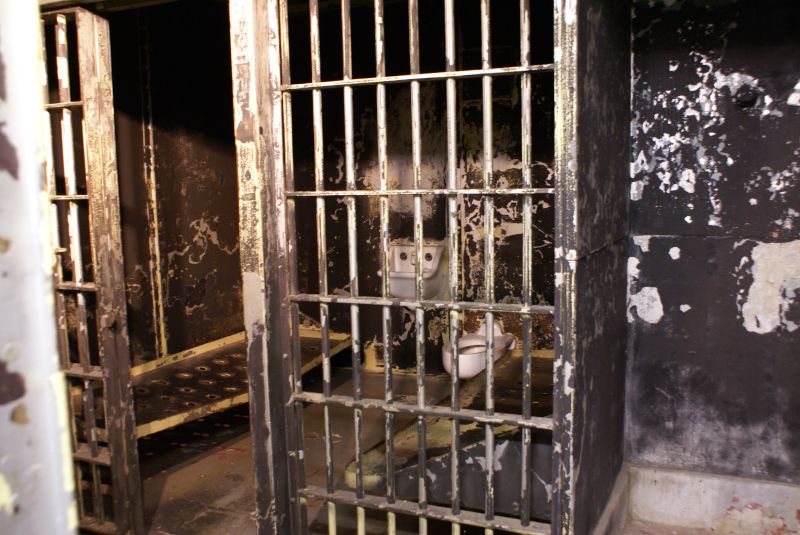Some were apparently confused by the title of this series. They seem to think I was arguing that those being locked up are addicted to incarceration. Either I didn’t make my point clearly enough or they didn’t read closely enough. My argument is that we, as a society, have become addicted to incarceration.
We continue to engage in the behavior in spite of the negative consequences. We spend a lot of time and money on the behavior. We have certainly developed a tolerance for it and in spite of modest efforts to cut back, we continue to incarcerate people in record numbers.
Some were also upset that I compared drug addiction to a seemingly unrelated societal behavior. They think I minimized the seriousness of drug addiction by making the analogy. However, I think the analogy is completely appropriate. For an additional reference, I’ll repost my favorite definition of addiction here:
“Addiction is any repeated behaviour, substance-related or not, in which a person feels compelled to persist, regardless of its negative impact on his life and the lives of others” – Dr. Gabor MatéIn the earlier posts, we reviewed some of the reasons we, as a society, use incarceration (punishment, deterrence, isolation, etc.). We’ve also looked at who gets incarceration and discovered they are disproportionately minority and from lower socioeconomic statuses. We’ve even looked at the consequences (direct and collateral) of incarceration and asked the obvious question, is this working? Now let’s looks at a few alternatives that may help break our addiction to incarceration.
Drug Courts Work
Drug Courts and other specialty court programs are intended as diversions from incarceration. The programs allow offenders to remain in the community under close supervision while providing needed treatment services to help address problems. Participants submit to regular random drug testing and face sanctions, up to jail days, for violations of program rules.
Most programs are between one and three years. The cost to taxpayers is typically around $5000 to $7000 per offender. The participants are typically required to pay a portion of their supervision costs as well as drug testing expenses. It’s not uncommon for offenders to pay between $100 to $200 per month for their part of the program expenses.
What are the results? For a fraction of the cost of incarceration, offenders are allowed to stay in the community working at productive jobs. They are allowed to maintain and often repair their family and community relationships. They receive treatment for their substance abuse and/or mental health concerns and most importantly, are much less likely to re-offend than their incarcerated counterparts.
There are many other diversion programs including community sentencing and community corrections type options that have also proven effective at reducing recidivism. These programs are being used across the country and without them, our prison population would surely have already passed the breaking point.
These programs aren’t perfect and aren’t always administered according to best practices but they certainly help. There are many criticisms of these programs but as someone who works closely with these systems, I can say that anecdotally, they offer a valuable service to society. Think of them as a harm-reduction approach to our problems.
Anger or Fear?
In Part 1, we discussed the concept of locking people up because we’re afraid of them. In my opinion, that is the most legitimate reason to deprive someone of their liberty. Those convicted of violent crimes including rape, murder and assault should appropriately be isolated from the rest of society as part of their punishment.
We’ve seen that around half of all federal and state inmates are convicted of either drug or other non-violent offenses. We could immediately and dramatically cut the numbers incarcerated and the overall cost by not locking up drug users and non-violent offenders.
There are those who will argue that drug offenses should be considered violent. That’s the type of argument that has led to 2.3 million people in prison and an ever-expanding drug problem. It’s an argument that “feels good” for a lot of people but contributes to the current problems. An independent review (one of many) of our current policies found that they have completely “failed to fundamentally alter the scale and nature of the illegal drug market”.
So what would happen if we reviewed the status of every person now housed in federal, state and local facilities and asked the question, is this person dangerous? If they aren’t, could we just release them? I’m afraid the chaos of releasing that many unemployed and often unskilled people into society might prove disastrous. Any mass release of prisoners would need to be conducted in a thoughtful and considered manner. To continue with the analogy, we will probably need a controlled detox from our addiction.
Could we create programs to help with reentry? Many states, including Oklahoma, have had some success with reentry programs but they remain chronically understaffed and underfunded. The only way we could effectively manage a mass reentry would be to shift money and resources now used for incarceration to diversion and reentry programs. As I mentioned in a earlier post, the cost of an apartment and community college or vocational school is around half what we currently spend on incarceration.
I’ve heard our prison system compared to the classic I Love Lucy conveyor belt scene where the inmates move through faster they our systems can process them. Many of the programs and processes would have and could have worked with a much slower flow of prisoners.
What is a Crime?
Some argue for a fundamental transformation of what we consider criminal. Portugal is the best known example of a country that decriminalized the possession of small amounts of even the most dangerous drugs. After 13 years, the results seem to be a pretty stable rate of addicted citizens with significant reductions in crime and criminal justice costs.
There is a big difference between legalization and decriminalization. States like Washington and Colorado have legalized recreational use of marijuana. We’ll have to track the results of those experiments over the next few years to see how that works.
Many other states have decriminalized (see list here) small amounts of marijuana. Rather than facing criminal charges or jail time, people caught with small amounts of the drug are given a citation and possibly a fine, much like a traffic or parking ticket.
I struggle with the ideas of legalization because I see first-hand the devastation caused by addiction. I know many of those entering and benefiting from treatment would not have done so if they weren’t pressured by the criminal justice system. However, I also realize that what we’re doing isn’t working.
Would decriminalization help remove the stigma from addiction? With a reduced stigma, would those with problems be more inclined to seek and receive treatment? If we weren’t spending billions to incarcerate addicts at $20,000 per year, could we offer more treatment in the community for those who want and need it?
There are likely more questions than answers and more answers than I could possibly detail here. The short summary is, what we’re doing isn’t working and we’ve got to look at alternatives. We can’t continue to do “what feels good” in spite of the long-term costs and consequences to our society. We have to be willing to challenge some of our beliefs and look at what works and what doesn’t.
I highly recommend the documentary “The House I Live In” for a shocking look from inside the war on drugs. The House I Live In [HD] is available as a rental or purchase from Amazon. I’ve included the official trailer below.
I have to agree with one reviewer who says it is your civic duty to watch this film. As always, I look forward to hearing from you with your thoughts and ideas on this and other topics.


